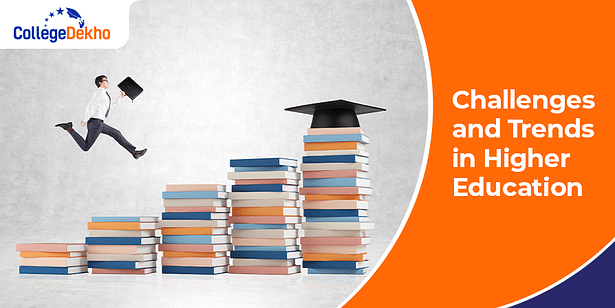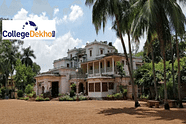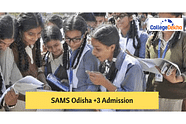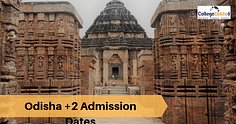
India attracts over 11 million students annually to its higher education institutions, making it home to one of the largest student populations globally. As the country realises its vast potential, the landscape of higher education is rapidly changing. CollegeDekho, with its keen insight into student needs, explores the latest findings from its HEART report to reveal the shifting trends and challenges in India's higher education sector.
Understanding this knowledge is essential for unlocking the limitless potential of India's youth. Our report, "HEART" acts as a detailed guide, providing data-driven insights and regional analysis. By working together, we can guarantee that every student receives the guidance and educational opportunities they need. This article will delve into the new challenges and trends in India's higher education sector.
What is “HEART” Report?
The HEART report reflects CollegeDekho's dedication to using data and insights to spark discussions and drive meaningful change in India's higher education system. This report isn't just about numbers; it explores the complete student journey, from initial exploration to final decision-making. By examining search behaviours, demographic and socio-economic factors, and migration trends, the HEART report aims to uncover both the challenges and trends in India's higher education sector.
Top Trends in Indian Higher Education Sector
CollegeDekho's HEART report offers an intriguing overview of India's higher education landscape, highlighting dynamic growth and emerging trends. Some of these trends are highlighted below:
- Growth in Gross Enrolment Ratio: India’s Gross Enrolment Ratio (GER) in Higher Education stands at 28.3%. However, with strong government support, we are witnessing a steady annual increase in this ratio.
- The Rise of the Humanities Stream: Although "Education" is the most searched field online, the Humanities stream has the highest enrolment rates across the country.
- Career-Oriented Mindset: Tech-savvy students show a strong preference for engineering, which highlights their career-focused mindset. Following closely are fields like Management and Science.
- Intra-State Migration: The report highlights a positive trend in intra-state migration for higher education, which has increased from 31% to 42% over the past three years. This growth suggests that the educational infrastructure within states has significantly improved.
- Inter-State Migration: Inter-state migration, once a common trend, is now decreasing among digitally savvy students, with rates dropping from 36% to 28% over the same timeframe. Punjab has become the most popular destination for these students, thanks to its renowned private universities. Meanwhile, states like Uttar Pradesh and Karnataka are seeing an increase in student arrivals due to their growing higher education systems.
Did You Know?
Recent surveys suggest that approximately 60% of India’s youth aged between 6 and 17 years have access to smartphones and spend an average of 2-3 hours online daily. This widespread digital connectivity empowers them to make more informed choices about their higher education.
Top Challenges in Indian Higher Education Sector
India's higher education system is advancing, yet there are areas needing enhancement. Let's delve into some of the challenges addressed by the HEART report:
- Digital Trends vs. Enrollment Realities: The CollegeDekho HEART report reveals a notable contrast between online search behaviours and real-world enrollment trends. It highlights how digital accessibility is shaping career aspirations among students who are digitally connected. The report underscores a significant divergence between online interest in educational opportunities and the actual enrollment statistics.
- Regional Disparities in College Access: Across India, there are notable differences in the availability of colleges among states. For instance, Uttar Pradesh leads with the highest number of colleges, reflecting its commitment to higher education. In contrast, in states such as Bihar and West Bengal, despite having the #2 and #4 largest populations aged 18-23 years, none of their districts rank among the top 10 in terms of college penetration.
- Comparison of College Density: In the USA, there is roughly one college for every 7,750 people. Meanwhile, in India, the ratio is about one college for every 3,240 people. This indicates a higher density of educational institutions per capita in India compared to the United States.
- Enrolment Trends in Indian States: In the past three years, enrolment rates in Sikkim have decreased significantly from 76% to 39%, while in Tamil Nadu, they have also seen a decline from 51% to 47%. Interestingly, Karnataka boasts the highest density of colleges in India but ranks 12th in terms of enrolment percentage.
- Contrasting Degree Preferences in India's Higher Education: The report highlights a significant difference in degree choices between students with digital resources and the general student population. Although the Bachelor of Arts (BA) degree sees the highest enrolment nationwide, students with access to digital tools and guidance are more inclined to pursue career-focused degrees such as Bachelor of Technology (BTech) and Master of Business Administration (MBA).
Did You Know?
Recently, there has been a noticeable decrease in the number of applicants using digital platforms to apply for pharmacy degrees. This shift has sparked concerns and prompted analysis among educators and administrators in the field.
India's journey is just beginning, and there is still a long way to go. However, one thing is clear: the country's future growth will be fueled by its young people, who in turn will be empowered by high-quality higher education. A digital revolution is transforming the system, impacting millions and changing the entire landscape. This change is not limited to classrooms; it is a crucial part of India's quest to become a global powerhouse. Understanding the recent challenges and trends reshaping India's higher education sector can transform universities into platforms for a new generation ready to succeed. Dive into CollegeDekho's HEART Report 2024 for an in-depth look at the future of higher education in India.
For the most recent updates on the CUET exam, visit CollegeDekho. Feel free to reach out to us at 1800-572-877, or you can send us your queries using our Q&A form.
















Similar Articles
DHE/SAMS Odisha +3 Admissions 2025: Registration, Eligibility Criteria, Selection Process, Seat Allotment, Merit List
B.Ed Admission 2025: Dates, Application Form, Eligibility, Selection Process, Fees, Top Colleges
List of Documents Required to Fill UGC NET 2024 Application Form: Image Upload, Specifications
REET Syllabus 2025 for Level 1 and 2: Download Subject-wise PDFs, Exam Pattern
Karnataka B.Ed Selection List 2024: Date, Seat Allotment Result Link, PDF Download
TS TET 2024: Exam Dates (Out), Registration (Closed), Admit Card, Results